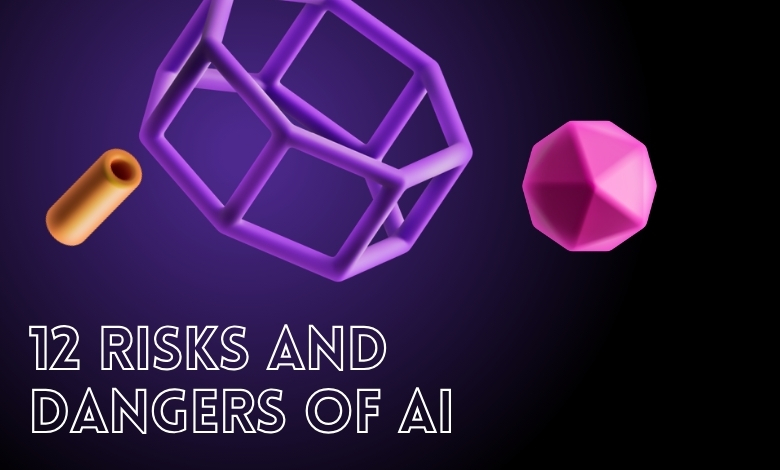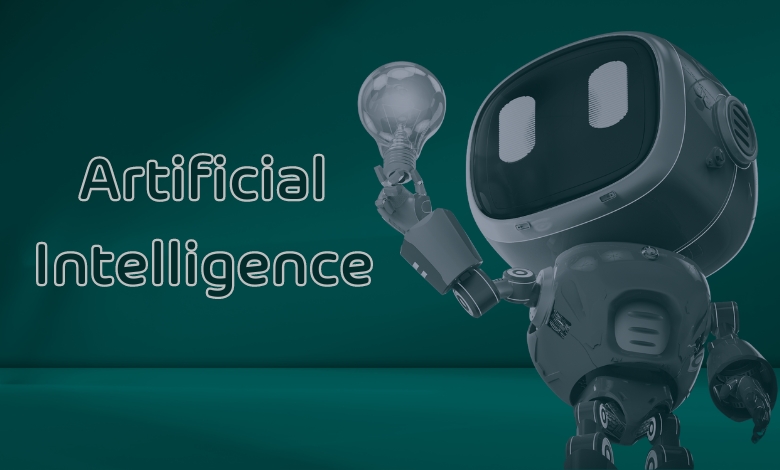Risks and Dangers of Artificial Intelligence: I’ve discussed 12 AI risks crucial for your awareness to safeguard yourself.
While Artificial Intelligence, our reliable AI, weaves through today’s tech scene. This environment is one where productivity soars and industries evolve at an unprecedented pace right before our eyes. But, with this amazing power comes a hint of caution, a soft nudge to be aware of the risks that come with such powerful tech.
Recently I’ve been on a quest to find 12 hidden challenges of artificial intelligence, full of treasures and traps waiting for your careful look. I’ve found some amazing secrets in the next sections of this blog.
Without further delay, let’s dive directly into the matter at hand and begin…
Article Breakdown
What is Artificial Intelligence?
Artificial Intelligence AI — is moving fast, trying to make machines that can think like us to help with work. But let’s be honest; it’s not all safe and sound. Honestly, Let’s not just get swept away by the exciting possibilities. It’s important to also face the downsides with open hearts.
Drawing lessons from my own journey and readying oneself for possible challenges makes everything easier.
In an important talk with the BBC, Stephen Hawking gave a serious warning about where artificial intelligence is heading. He pointed out a big worry: AI might one day be better than us at everything. His key point highlights a tough truth – while humans slowly get better over time, AI could zoom ahead. With its growth sure to continue, it makes us wonder: How can we make sure we live alongside with it, not just try to beat it? The task is clear. We need to change and improve our plans, making sure we use AI power without letting it take over.
Before we jump in, let me share some lessons I learned the tough way, so you can skip the hassle. I’m writing a blog post titled 8 Essential Steps to Safeguard Against AI. It’s filled with easy advice to protect ourselves from the risks of AI.
12 Risks and Dangers of Artificial Intelligence

Artificial Intelligence is the cutting-edge tech is about to change industries and boost efficiency big time. But, it comes with its own set of risks. Let’s dive into this topic, cutting through all the hype, and get into the details below:
1. AI can do things by itself without humans telling it what to do
Artificial Intelligence acts as a tool which works on tasks without any proper constant human monitoring.
While using AI, It accumulates numerous patterns and data, creating some inaccurate representations according to the analysis of that data and representations. So, It’s necessary to have a strong understanding of artificial intelligence while also mastering leadership in your field.
I feel this like watching a kid grow up and start making choices. If we don’t keep an eye on it, tech might go the wrong way. It’s hard to guess what will happen, but we keep hoping and being careful, steering it when we have to.
For devs and teams, it’s super important to stick to strict rules for ethical use. Having clear guidelines and keeping a close watch can really help amplify the good stuff while keeping the bad in check. Responsibly tapping into the cool stuff AI can do requires having a solid game plan.
2. AI takes over jobs, people lose work
We’ve got some big questions about jobs on our hands. AI is getting really good at doing stuff we do, and that’s causing some concerns about job losses. Businesses might lean towards AI to cut costs and boost efficiency.
Automation’s been around for a while, but AI is shaking things up in manufacturing and customer service like never before. With this massive leap in tech use, we’re hitting a big challenge: we gotta rethink society and figure out ways to support folks who are edged out of their jobs by machines.
Governments and businesses, listen up: AI is reshaping the job scene. It’s super important to dodge job losses by skilling up workers. Chatting about AI’s impact on jobs is tricky, but sitting on our hands? Not an option. We gotta have solid plans for a future where AI backs us up, instead of replacing us.
3. AI can worsen biases, and businesses need to obey laws about data and responsibility
AI is going to make things faster and smarter – how exciting! But there’s something important to remember: AI can pick up old biases from the data it learns from, leading to unfairness. From what I’ve seen, when companies use AI, it’s really important to think deeper than just following rules.
Paying attention to doing things ethically is key to avoid legal trouble and keep people’s trust.
Exploring AI, I’ve personally seen that dealing with bias isn’t just about meeting fairness standards or following data laws.
4. AI systems face security risks like data breaches, attacks, and unauthorized access
AI really catches my eye, but yeah, it’s not without its issues. Picture those spy movies full of suspense – that’s the vibe when we talk about data breaches and hackers, just minus the cool gadgets.
Have you ever witnessed the domino effect in action?It’s exactly what it sounds like “the domino”. Just a small mistake and bam, you’re dealing with a mountain of troubles. As our devices become more intelligent, hackers are also advancing in their tactics. They continually discover ingenious methods to breach our digital security.
So what can we do to make our digital world secure? It might seem difficult, but it’s totally manageable and super easy. What to do next? Use difficult to judge passwords, check our tech regularly, and be picky about who gets access to the systems. Large business have got to up their game too, constantly upgrading their AI defenses to outsmart the troublemakers.
Getting into AI and staying safe is a priority. But here’s the cool part – with the right security moves, diving into AI can be safer than you’d think. Investing in solid security lets us enjoy all the awesome benefits of AI without the stress. In the always-evolving AI scene, being ready for anything is your ace in the hole.
5. Handling big data for AI poses privacy and security risks
Artificial intelligence privacy and security risks are serious, and it’s up to you to boost your defenses. It thrives on data, making every bit of information a potential risk.
Consider your sensitive data as valuable as treasure, because to hackers, it is. Don’t get complacent; ensure your encryption and access controls are solid. And keep in mind that it’s not just about hackers. This is why you may have some serious consequences by losing or misusing data online.
Don’t ignore regulations like GDPR or CCPA. The fact is that they’re not just hurdles; they guide you away from risks. With this, single mistake can damage your reputation and your finances.
Focus on anonymizing data and discard what’s unnecessary. Ultimately, Defense is key, but so are smart strategies to keep your data handling safe, legal, and ahead of the game.
6. AI can pick up biases from its training data, leading to unfair results
Artificial Intelligence is like a super-smart friend, always ahead, handling tons of data and making fast decisions easily. But, just like anyone, it’s not perfect. With AI, one big problem is that AI can pick up biases from the data it learns from, leading to unfair results. Imagine an AI tool used for hiring that, without its creators knowing, favors certain people over others because of biased past data.
If we don’t address these biases, it will continue to make false facts. Companies diving into AI need to seriously check their algorithms for bias. However, The key to fair AI is to constantly watch and correct the data it learns from, making sure fairness and diversity are actually part of the technology.
Recognizing that AI can be biased is a must-do first step in fixing the issue. For a proper use, we should not just not go with AI advanced feature but also train it to be more accurate in the future.
7. Businesses need AI that can handle big tasks without losing quality or speed
Businesses are constantly trying to do better and work faster. It’s becoming obvious that those not using artificial intelligence are falling behind. Luckily, AI is not just another tool; it’s changing the game by handling big tasks quickly and without losing quality.
While using AI, it can go through data super fast, helping businesses make real time decisions. From analyzing complex data to taking care of boring tasks, AI is not just nice to have—it’s necessary for companies that want to lead in the tough market of today.
AI’s ability to make business operations smoother is clear. It makes work flow run smoother, increases work output (bulk output), and come up with better insghts better results. Its capability to perform tasks with greater accuracy and speed is transforming various sectors, including finance, healthcare, marketing, and manufacturing.
Looking into the future, companies that keep adding AI will lead in creating new things. The demand for AI that keeps things fast and good is not just increasing; it’s a must-have. Putting money into AI is like preparing your business to stay in front in our computer-based world.
8. AI models may not work well with large datasets
AI models struggle with big data, and here’s the scoop: when they deal with tons of info, they get slower, crave more computer juice, and can slip up. This happens because there’s too much scattered and messy data, filled with unnecessary info. Occasionally, It hides the useful patterns and insights that AI systems are looking for. It’s like searching for a needle in a huge pile of hay – the needle is the valuable insight hidden among lots of useless data. Moreover, training with such a massive load of data eats up a lot of time and resources, making the whole process less smooth.
The fact is that the fight is not done yet. There are some really dedicated folks out there, working tirelessly to pump up AI’s strength so it can handle huge piles of data way better. They use distributed computing to handle many tasks at once and smart algorithms to make things work better. That’s how they’re planning to make AI even smarter at sorting through all that info overload.
Instead of getting better, AI still struggles with handling a lot of data. The plan should be to make AI smarter and help it do more than before. As we tackle these challenges directly, our main aim stays the same: to equip AI with the tools it needs to sort through huge amounts of data and produce clearer, more dependable results.
9. Integrating AI into old systems can be tricky
Adding AI to old systems is a big change for businesses looking to update. Mixing old setups with new AI tech isn’t easy, almost like trying to mix oil and water. These old systems, comfortable in their outdated ways and designed for yesteryear, are the speed bumps on the road to progress, leading to those frustrating delays and inefficiencies we just can’t ignore.
If your systems aren’t ready to flex or big enough, throwing AI into the mix is going to stir up a storm. Get ready to either give those systems a complete makeover or a significant upgrade to get them AI-friendly. It is about preparing your business for the future and goes beyond merely keeping pace.
Making sure your data plays nice with these revamped systems and everything runs like a dream isn’t just a tech issue; it’s the cornerstone of success. You’ve got to take a good, hard look at your current setup, pinpoint the shortcomings, and craft a bulletproof plan for integration.
It’s about rallying your IT crew, the devs, and all the key players. Team up, brainstorm, and tackle the nitty-gritty of folding AI into those antiquated systems. Surely, this mission needs vision, leadership, and the boldness to explore new territories, not just technical skills.
While weaving AI into your business operations might seem daunting, see this as your chance to shine. Think smoother workflows, amped-up efficiency, and a jump on the competition.
10. Businesses using AI must follow rules like GDPR and CCPA for handling data and getting user consent
Data protection really matters to me, it’s more than just ticking a box. Going through GDPR and CCPA was a real eye-opener – it really drove home how important it is to respect our customers and earn their trust. These laws aren’t just hoops to jump through for me; they’re chances to show how reliable my business is.
GDPR and CCPA are all about making sure we’re clear with people about wanting to use their personal info, and handling that info with transparency and respect. It means being straight up about what data we collect and how we use it, which is good for everyone, not just folks in California.
Getting on board with these privacy laws has totally changed how I see AI. This experience taught me that:
- Going beyond the basics can be rewarding
- Improved brand image, showing commitment to trust and ethics
- Gained a better understanding of handling online privacy
11. Integrating AI systems with existing software applications
Adding AI to your software? It’s like giving it a super boost. You’re leveling up by mixing cool new tech with your old-school systems. But heads up, it’s not always easy, especially with older setups. Your aim changes from just getting things to work to making sure they don’t turn into a disaster.
You need to really dig into your system to make sure the AI fits in perfectly. Trust me, this is tough. It takes smart planning, lots of testing, and perfect execution. If you don’t get it right, you might end up going backwards.
And the data! It’s got to match up with the AI just right. Mess it up, and your AI won’t be doing much. Security is another huge thing. Think of your AI-upgraded system as a super secure vault.
Getting AI into your software shows you’re on the cutting edge. But remember, it’s full of challenges that need all your focus and respect.
From my experience to yours, it’s tough but totally worth it. You’ll learn a lot and celebrate big wins.
12. Building trust for AI systems is tough if people doubt their clarity or reliability
I’ve got something important to share. If you want to be a leader in innovation, getting into AI is a must—it’s super important. I know, the whole AI thing can seem pretty mysterious and a bit scary. People often wonder, “Is AI really on our side?” This doubt stops them from seeing how amazing AI can be.
So, how do we change this story? The answer is transparency. It’s all about showing clearly how AI works and makes choices. If you’ve got a business, it’s your move. Your AI needs to do its job well, but also be something people can get and trust. Simplify the tech stuff, make it super easy to use. Be clear about how it makes decisions, and tackle any concerns about bias or mistakes straight up.
But don’t stop there. Keep checking on your AI, test it, and show off how reliable and awesome it is over and over. Stick to being ethical, keeping your standards really high. This is how you build super strong trust.
Oh, and feedback is super important. Create ways for users to tell you how they feel about your AI. It shows you’re listening and ready to make things even better. It proves you’re not just meeting expectations, but blowing them away.
Believe me, taking these steps can make people see your AI in a whole new light, turning doubts into excitement.
Final Thoughts
Exploring Artificial Intelligence is like going on an unknown adventure, and I’ve been there. The trick is to make a clear, smart plan that’s also good and keeps changing. It’s like using a compass that always shows the right way.
Companies, big or small, need strong plans that focus on :
- Reduce unfairness
- Follow ethical rules
- Utilize AI’s potential
It’s about finding the right balance. With these key parts, you will build trust and encourage responsible AI use, setting the stage for safe and thoughtful progress. From my experience, this method isn’t just about dodging dangers; it’s about grabbing new chances with both hands, knowing well what’s involved. It’s like walking through the AI maze with a map and a flashlight, ready to make smart choices.



